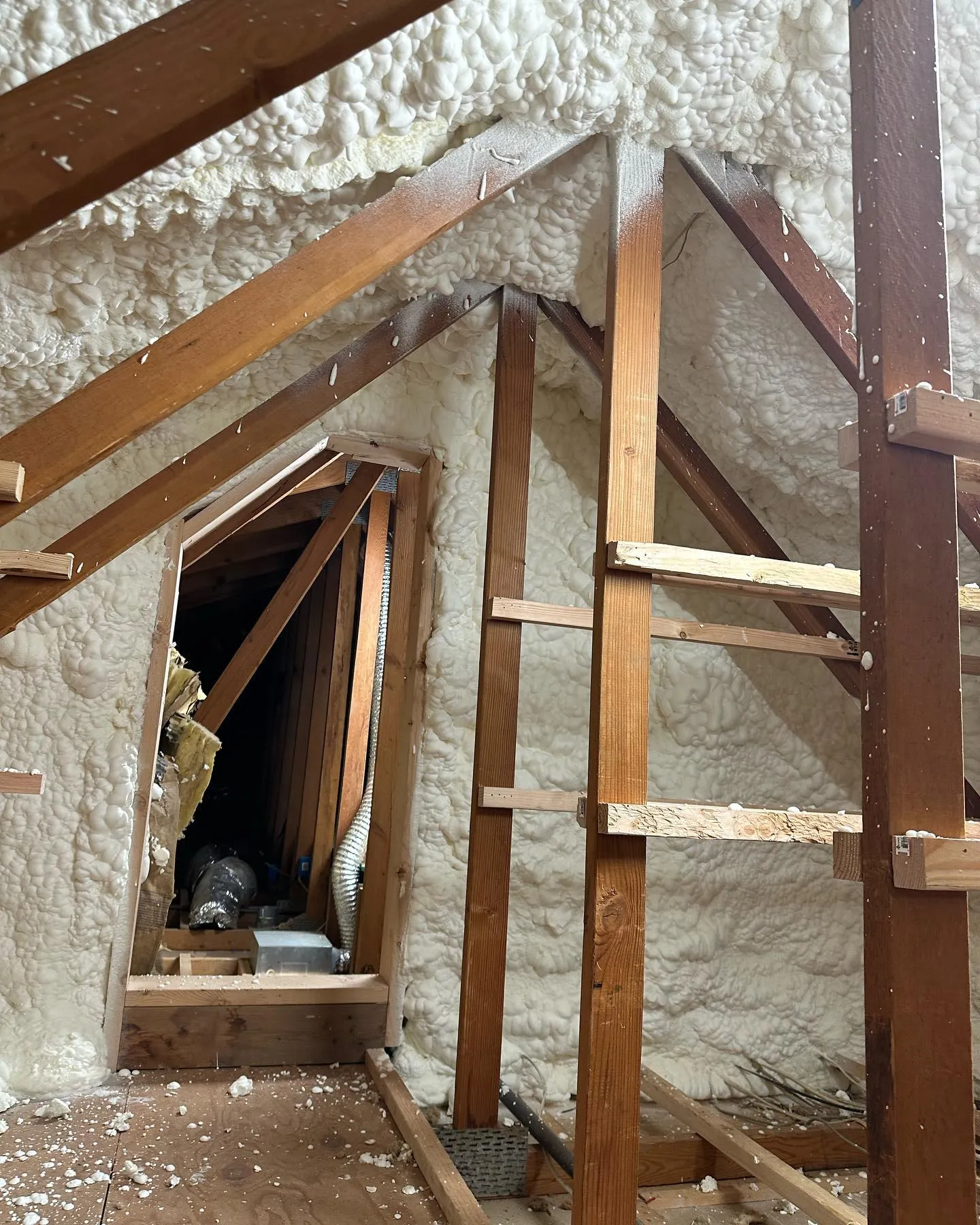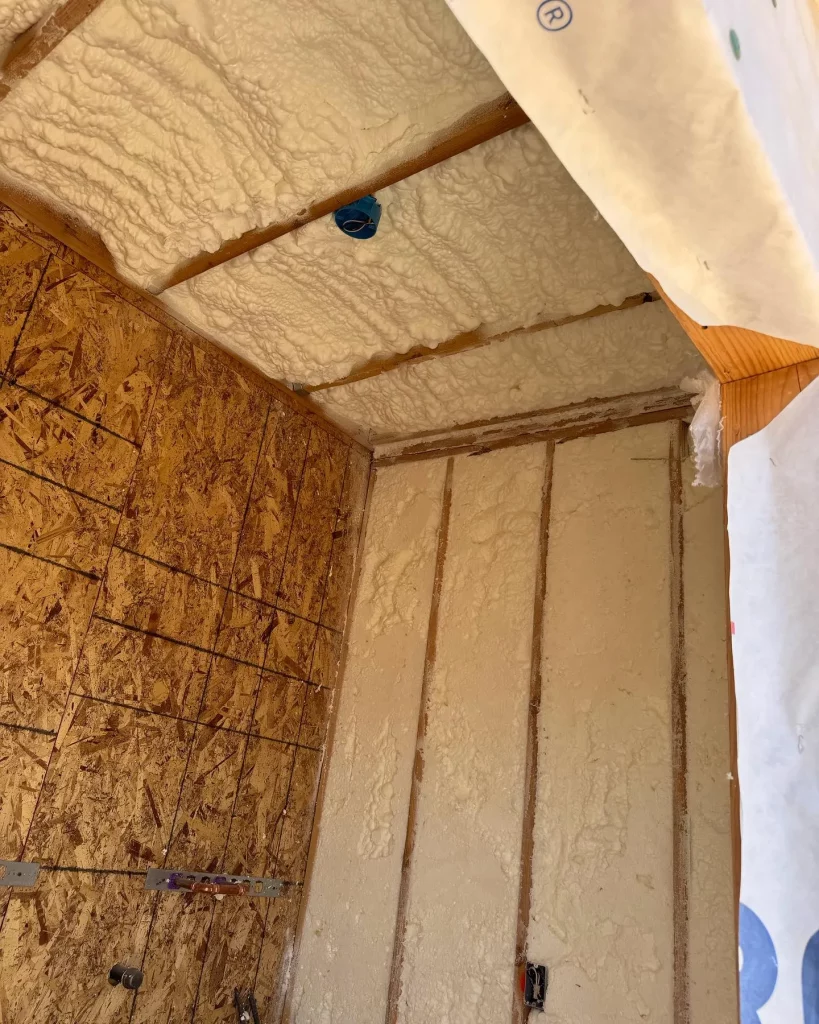
Spray foam insulation significantly reduces energy waste in homes across Surprise, AZ by creating a sealed thermal envelope that minimizes air leakage. This barrier lowers HVAC workload, maintaining consistent indoor temperatures even in extreme desert heat. Closed cell and open cell foams differ in structure but both outperform traditional insulation in airtightness and long-term efficiency.
Homes in Surprise face intense summer heat and dry desert winters. Insufficient insulation causes HVAC systems to run longer, leading to high energy consumption. Spray foam blocks heat transfer more effectively than fiberglass or cellulose, cutting energy use by up to 40% when properly installed.
The following breakdown presents key technical comparisons and field-tested data that show how spray foam insulation performs under real-world Arizona conditions. These insights come from firsthand application experience across residential and commercial properties in the region.
| Insulation Type | R-Value per Inch | Air Seal Quality | Moisture Resistance | Longevity (Years) | Effective in AZ Climate |
|---|---|---|---|---|---|
| Closed Cell Spray Foam | 6.5 – 7.0 | Excellent | High | 40+ | Yes |
| Open Cell Spray Foam | 3.5 – 3.9 | Very Good | Moderate | 25+ | Yes |
| Fiberglass Batts | 2.9 – 3.2 | Poor | Low | 15 – 20 | Limited |
| Cellulose (Dense Pack) | 3.5 – 3.8 | Moderate | Low | 20 – 30 | Moderate |
Spray foam creates an unbroken seal across walls, ceilings, and crawlspaces. Closed cell foam adds structural strength and acts as a vapor barrier. Open cell foam expands to fill gaps, reducing infiltration.
Bonus Tip: In Surprise, AZ attics can reach 150°F in summer. Using closed cell foam under roof decking drastically lowers attic temperatures, keeping indoor systems more efficient.
Tightly sealed homes need less frequent heating or cooling. Constant temperatures mean shorter system run times and reduced equipment wear.
Market Fact: According to the U.S. Department of Energy, heating and cooling account for 48% of home energy use. Reducing leakage with spray foam can lower HVAC usage by up to 30%.
Monsoon season brings sudden humidity and wind-driven rain. Closed cell foam resists water penetration, helping prevent mold and wood rot.
Spray foam insulation in Surprise, AZ closes small air paths that carry allergens from the outside. This is especially valuable in spring and early fall when airborne particulates spike.
| Specification | Closed Cell Spray Foam | Open Cell Spray Foam |
|---|---|---|
| Density (lbs/ft³) | 1.75 – 2.2 | 0.4 – 0.5 |
| Expansion Rate | ~30x | ~100x |
| Vapor Barrier | Yes | No |
| Sound Dampening | Moderate | High |
| Best Use Areas | Roof, foundation, exterior walls | Interior walls, ceilings |

Bonus Tip: For renovations in older homes, conduct a blower door test first to identify leakage points. This avoids over insulating areas that may have larger structural issues.
Yes. With proper ventilation and prep, both open and closed cell foam are compatible with older wood-frame and stucco structures.
Attics, crawlspaces, rim joists, and wall cavities where air leakage is highest. Roof decks in Surprise homes see major efficiency gains.
No ongoing maintenance is required after proper installation. Occasional inspections during HVAC service visits are recommended.
Most residential installations are completed in 1-2 days, depending on project size and preparation.
Spray foam insulation works well in the climate and construction types found in Surprise, AZ. It provides a long-term solution to reduce energy costs, improve indoor air quality, and increase comfort. Material choice should align with wall type, building goals, and HVAC strategy.
To determine which spray foam solution fits your Surprise home, contact All Valley Insulation LLC for professional guidance. Reach the team at [email protected] or call (602) 761-0367 to get informed answers and schedule an assessment. All recommendations are based on tested field experience and region-specific building knowledge.
Yes. After curing, foam can be trimmed and covered with drywall or fire-rated coatings depending on local building codes.
Closed cell foam resists shrinkage and maintains R-value for over 40 years. Open cell lasts 25+ years with minimal performance loss.
No. Spray foam does not provide a food source or nesting material for insects or rodents.
Yes. Hybrid applications (e.g., foam plus fiberglass or cellulose) are possible depending on structure and budget.
Once cured, foam insulation is inert. Proper installation and post-install ventilation eliminate odor and VOC concerns.